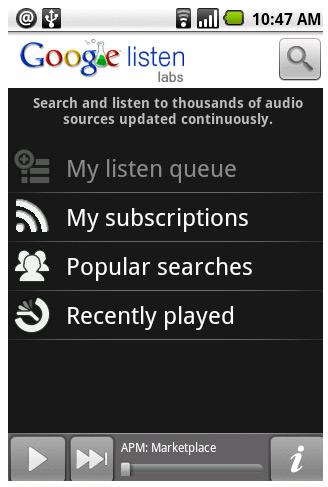What is H1N1 (swine flu)?Novel H1N1 (referred to as “swine flu” early on) is a new influenza virus causing illness in people. This new virus was first detected in people in the United States in April 2009. This virus is spreading from person-to-person worldwide, probably in much the same way that regular seasonal influenza viruses spread. On June 11, 2009, the World Health Organization (WHO) signaled that a pandemic of novel H1N1 flu was underway.
Why is novel H1N1 virus sometimes called “swine flu”?This virus was originally referred to as “swine flu” because laboratory testing showed that many of the genes in this new virus were very similar to influenza viruses that normally occur in pigs (swine) in North America. But further study has shown that this new virus is very different from what normally circulates in North American pigs. It has two genes from flu viruses that normally circulate in pigs in Europe and Asia and bird (avian) genes and human genes. Scientists call this a "quadruple reassortant" virus.
Novel H1N1 Flu in HumansAre there human infections with novel H1N1 virus in the U.S.?
Yes. Human infections with the new H1N1 virus are ongoing in the United States. Most people who have become ill with this new virus have recovered without requiring medical treatment.
CDC routinely works with states to collect, compile and analyze information about influenza, and has done the same for the new H1N1 virus since the beginning of the outbreak. This information is presented in a weekly report, called FluView.
Is novel H1N1 virus contagious?CDC has determined that novel H1N1 virus is contagious and is spreading from human to human.
How does novel H1N1 virus spread?Spread of novel H1N1 virus is thought to occur in the same way that seasonal flu spreads. Flu viruses are spread mainly from person to person through coughing or sneezing by people with influenza. Sometimes people may become infected by touching something – such as a surface or object – with flu viruses on it and then touching their mouth or nose.
Photo of nurse and child
What are the signs and symptoms of this virus in people?The symptoms of novel H1N1 flu virus in people include fever, cough, sore throat, runny or stuffy nose, body aches, headache, chills and fatigue. A significant number of people who have been infected with this virus also have reported diarrhea and vomiting. Severe illnesses and death has occurred as a result of illness associated with this virus.
How severe is illness associated with novel H1N1 flu virus?
Illness with the new H1N1 virus has ranged from mild to severe. While most people who have been sick have recovered without needing medical treatment, hospitalizations and deaths from infection with this virus have occurred.
In seasonal flu, certain people are at “high risk” of serious complications. This includes people 65 years and older, children younger than five years old, pregnant women, and people of any age with certain chronic medical conditions. About 70 percent of people who have been hospitalized with this novel H1N1 virus have had one or more medical conditions previously recognized as placing people at “high risk” of serious seasonal flu-related complications. This includes pregnancy, diabetes, heart disease, asthma and kidney disease.
One thing that appears to be different from seasonal influenza is that adults older than 64 years do not yet appear to be at increased risk of novel H1N1-related complications thus far. CDC laboratory studies have shown that children and few adults younger than 60 years old do not have existing antibody to novel H1N1 flu virus; however, about one-third of adults older than 60 may have antibodies against this virus. It is unknown how much, if any, protection may be afforded against novel H1N1 flu by any existing antibody.
How does novel H1N1 flu compare to seasonal flu in terms of its severity and infection rates?With seasonal flu, we know that seasons vary in terms of timing, duration and severity. Seasonal influenza can cause mild to severe illness, and at times can lead to death. Each year, in the United States, on average 36,000 people die from flu-related complications and more than 200,000 people are hospitalized from flu-related causes. Of those hospitalized, 20,000 are children younger than 5 years old. Over 90% of deaths and about 60 percent of hospitalization occur in people older than 65.
When the novel H1N1 outbreak was first detected in mid-April 2009, CDC began working with states to collect, compile and analyze information regarding the novel H1N1 flu outbreak, including the numbers of confirmed and probable cases and the ages of these people. The information analyzed by CDC supports the conclusion that novel H1N1 flu has caused greater disease burden in people younger than 25 years of age than older people. At this time, there are few cases and few deaths reported in people older than 64 years old, which is unusual when compared with seasonal flu. However, pregnancy and other previously recognized high risk medical conditions from seasonal influenza appear to be associated with increased risk of complications from this novel H1N1. These underlying conditions include asthma, diabetes, suppressed immune systems, heart disease, kidney disease, neurocognitive and neuromuscular disorders and pregnancy.
How long can an infected person spread this virus to others?People infected with seasonal and novel H1N1 flu shed virus and may be able to infect others from 1 day before getting sick to 5 to 7 days after. This can be longer in some people, especially children and people with weakened immune systems and in people infected with the new H1N1 virus.
Prevention & TreatmentWhat can I do to protect myself from getting sick?
There is no vaccine available right now to protect against novel H1N1 virus. However, a novel H1N1 vaccine is currently in production and may be ready for the public in the fall. As always, a vaccine will be available to protect against seasonal influenza
There are everyday actions that can help prevent the spread of germs that cause respiratory illnesses like influenza.
Take these everyday steps to protect your health:- co your nose and mouth with a tissue when you cough or sneeze. Throw the tissue in the trash after you use it.
- wash your hands often with soap and water, especially after you cough or sneeze. Alcohol-based hand cleaners* are also effective.
- Avoid touching your eyes, nose or mouth. Germs spread this way.
- Try to avoid close contact with sick people.
If you are sick with flu-like illness, CDC recommends that you stay home for at least 24 hours after your fever is gone except to get medical care or for other necessities. (Your fever should be gone without the use of a fever-reducing medicine.) Keep away from others as much as possible to keep from making others sick.
Other important actions that you can take are: Follow public health advice regarding school closures, avoiding crowds and other social distancing measures.
Be prepared in case you get sick and need to stay home for a week or so; a supply of over-the-counter medicines, alcohol-based hand rubs,* tissues and other related items might could be useful and help avoid the need to make trips out in public while you are sick and contagious
What is the best way to keep from spreading the virus through coughing or sneezing?If you are sick with flu-like illness, CDC recommends that you stay home for at least 24 hours after your fever is gone except to get medical care or for other necessities. (Your fever should be gone without the use of a fever-reducing medicine.)
Keep away from others as much as possible. Cover your mouth and nose with a tissue when coughing or sneezing. Put your used tissue in the waste basket. Then, clean your hands, and do so every time you cough or sneeze.
If I have a family member at home who is sick with novel H1N1 flu, should I go to work?Employees who are well but who have an ill family member at home with novel H1N1 flu can go to work as usual. These employees should monitor their health every day, and take everyday precautions including washing their hands often with soap and water, especially after they cough or sneeze. Alcohol-based hand cleaners are also effective.* If they become ill, they should notify their supervisor and stay home. Employees who have an underlying medical condition or who are pregnant should call their health care provider for advice, because they might need to receive influenza antiviral drugs to prevent illness. For more information please see General Business and Workplace Guidance for the Prevention of Novel Influenza A (H1N1) Flu in Workers.
What is the best technique for washing my hands to avoid getting the flu?Washing your hands often will help protect you from germs. Wash with soap and water or clean with alcohol-based hand cleaner*. CDC recommends that when you wash your hands -- with soap and warm water -- that you wash for 15 to 20 seconds. When soap and water are not available, alcohol-based disposable hand wipes or gel sanitizers may be used. You can find them in most supermarkets and drugstores. If using gel, rub your hands until the gel is dry. The gel doesn't need water to work; the alcohol in it kills the germs on your hands.
What should I do if I get sick?If you live in areas where people have been identified with novel H1N1 flu and become ill with influenza-like symptoms, including fever, body aches, runny or stuffy nose, sore throat, nausea, or vomiting or diarrhea, you should stay home and avoid contact with other people. CDC recommends that you stay home for at least 24 hours after your fever is gone except to get medical care or for other necessities. (Your fever should be gone without the use of a fever-reducing medicine.) Stay away from others as much as possible to keep from making others sick.Staying at home means that you should not leave your home except to seek medical care. This means avoiding normal activities, including work, school, travel, shopping, social events, and public gatherings.
If you have severe illness or you are at high risk for flu complications, contact your health care provider or seek medical care. Your health care provider will determine whether flu testing or treatment is needed.
If you become ill and experience any of the following warning signs, seek emergency medical care.
In children, emergency warning signs that need urgent medical attention include:
- Fast breathing or trouble breathing
- Bluish or gray skin color
- Not drinking enough fluids
- Severe or persistent vomiting
- Not waking up or not interacting
- Being so irritable that the child does not want to be held
- Flu-like symptoms improve but then return with fever and worse cough
In adults, emergency warning signs that need urgent medical attention include:- Difficulty breathing or shortness of breath
- Pain or pressure in the chest or abdomen
Flu-like symptoms improve but then return with fever and worse cough
Are there medicines to treat novel H1N1 infection?Yes. CDC recommends the use of oseltamivir or zanamivir for the treatment and/or prevention of infection with novel H1N1 flu virus. Antiviral drugs are prescription medicines (pills, liquid or an inhaled powder) that fight against the flu by keeping flu viruses from reproducing in your body. If you get sick, antiviral drugs can make your illness milder and make you feel better faster. They may also prevent serious flu complications. During the current pandemic, the priority use for influenza antiviral drugs during is to treat severe influenza illness (for example hospitalized patients) and people who are sick who have a condition that places them at high risk for serious flu-related complications.
What is CDC’s recommendation regarding "swine flu parties"?"Swine flu parties" are gatherings during which people have close contact with a person who has novel H1N1 flu in order to become infected with the virus. The intent of these parties is for a person to become infected with what for many people has been a mild disease, in the hope of having natural immunity novel H1N1 flu virus that might circulate later and cause more severe disease.
CDC does not recommend "swine flu parties" as a way to protect against novel H1N1 flu in the future. While the disease seen in the current novel H1N1 flu outbreak has been mild for many people, it has been severe and even fatal for others. There is no way to predict with certainty what the outcome will be for an individual or, equally important, for others to whom the intentionally infected person may spread the virus.
CDC recommends that people with novel H1N1 flu avoid contact with others as much as possible. If you are sick with flu-like illness, CDC recommends that you stay home for at least 24 hours after your fever is gone except to get medical care or for other necessities. (Your fever should be gone without the use of a fever-reducing medicine.) Stay away from others as much as possible to keep from making others sick.
Contamination & CleaningHow long can influenza virus remain viable on objects (such as books and doorknobs)?Studies have shown that influenza virus can survive on environmental surfaces and can infect a person for 2 to 8 hours after being deposited on the surface.
What kills influenza virus?Influenza virus is destroyed by heat (167-212°F [75-100°C]). In addition, several chemical germicides, including chlorine, hydrogen peroxide, detergents (soap), iodophors (iodine-based antiseptics), and alcohols are effective against human influenza viruses if used in proper concentration for a sufficient length of time. For example, wipes or gels with alcohol in them can be used to clean hands. The gels should be rubbed into hands until they are dry.
What if soap and water are not available and alcohol-based products are not allowed in my facility?Though the scientific evidence is not as extensive as that on hand washing and alcohol-based sanitizers, other hand sanitizers that do not contain alcohol may be useful for killing flu germs on hands.
What surfaces are most likely to be sources of contamination?Germs can be spread when a person touches something that is contaminated with germs and then touches his or her eyes, nose, or mouth. Droplets from a cough or sneeze of an infected person move through the air. Germs can be spread when a person touches respiratory droplets from another person on a surface like a desk, for example, and then touches their own eyes, mouth or nose before washing their hands.
How should waste disposal be handled to prevent the spread of influenza virus?
To prevent the spread of influenza virus, it is recommended that tissues and other disposable items used by an infected person be thrown in the trash. Additionally, persons should wash their hands with soap and water after touching used tissues and similar waste.
suppliesWhat household cleaning should be done to prevent the spread of influenza virus?To prevent the spread of influenza virus it is important to keep surfaces (especially bedside tables, surfaces in the bathroom, kitchen counters and toys for children) clean by wiping them down with a household disinfectant according to directions on the product label.
How should linens, eating utensils and dishes of persons infected with influenza virus be handled?Linens, eating utensils, and dishes belonging to those who are sick do not need to be cleaned separately, but importantly these items should not be shared without washing thoroughly first.
Linens (such as bed sheets and towels) should be washed by using household laundry soap and tumbled dry on a hot setting. Individuals should avoid “hugging” laundry prior to washing it to prevent contaminating themselves. Individuals should wash their hands with soap and water or alcohol-based hand rub immediately after handling dirty laundry.
Eating utensils should be washed either in a dishwasher or by hand with water and soap.
Exposures Not Thought to Spread Novel H1N1 FluCan I get infected with novel H1N1 virus from eating or preparing pork?
No. Novel H1N1 viruses are not spread by food. You cannot get infected with novel HIN1 virus from eating pork or pork products. Eating properly handled and cooked pork products is safe.
Is there a risk from drinking water?Tap water that has been treated by conventional disinfection processes does not likely pose a risk for transmission of influenza viruses. Current drinking water treatment regulations provide a high degree of protection from viruses. No research has been completed on the susceptibility of novel H1N1 flu virus to conventional drinking water treatment processes. However, recent studies have demonstrated that free chlorine levels typically used in drinking water treatment are adequate to inactivate highly pathogenic H5N1 avian influenza. It is likely that other influenza viruses such as novel H1N1 would also be similarly inactivated by chlorination. To date, there have been no documented human cases of influenza caused by exposure to influenza-contaminated drinking water.
Can novel H1N1 flu virus be spread through water in swimming pools, spas, water parks, interactive fountains, and other treated recreational water venues?Influenza viruses infect the human upper respiratory tract. There has never been a documented case of influenza virus infection associated with water exposure. Recreational water that has been treated at CDC recommended disinfectant levels does not likely pose a risk for transmission of influenza viruses. No research has been completed on the susceptibility of novel H1N1 influenza virus to chlorine and other disinfectants used in swimming pools, spas, water parks, interactive fountains, and other treated recreational venues. However, recent studies have demonstrated that free chlorine levels recommended by CDC (1–3 parts per million [ppm or mg/L] for pools and 2–5 ppm for spas) are adequate to disinfect avian influenza A (H5N1) virus. It is likely that other influenza viruses such as novel H1N1 virus would also be similarly disinfected by chlorine.
Can novel H1N1 influenza virus be spread at recreational water venues outside of the water?Yes, recreational water venues are no different than any other group setting. The spread of this novel H1N1 flu is thought to be happening in the same way that seasonal flu spreads. Flu viruses are spread mainly from person to person through coughing or sneezing of people with influenza. Sometimes people may become infected by touching something with flu viruses on it and then touching their mouth or nose.







 Fair warning: don't expect Caffeine to introduce natural language recognition, search results from Twitter, or anything else too fancy.
Fair warning: don't expect Caffeine to introduce natural language recognition, search results from Twitter, or anything else too fancy. 



